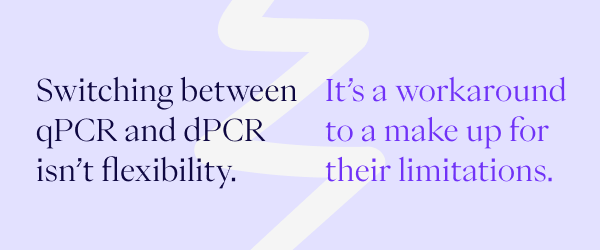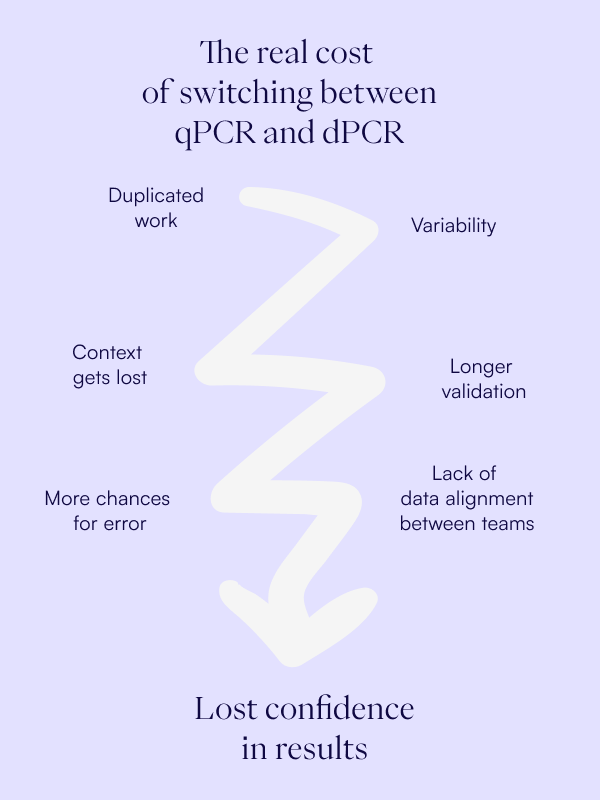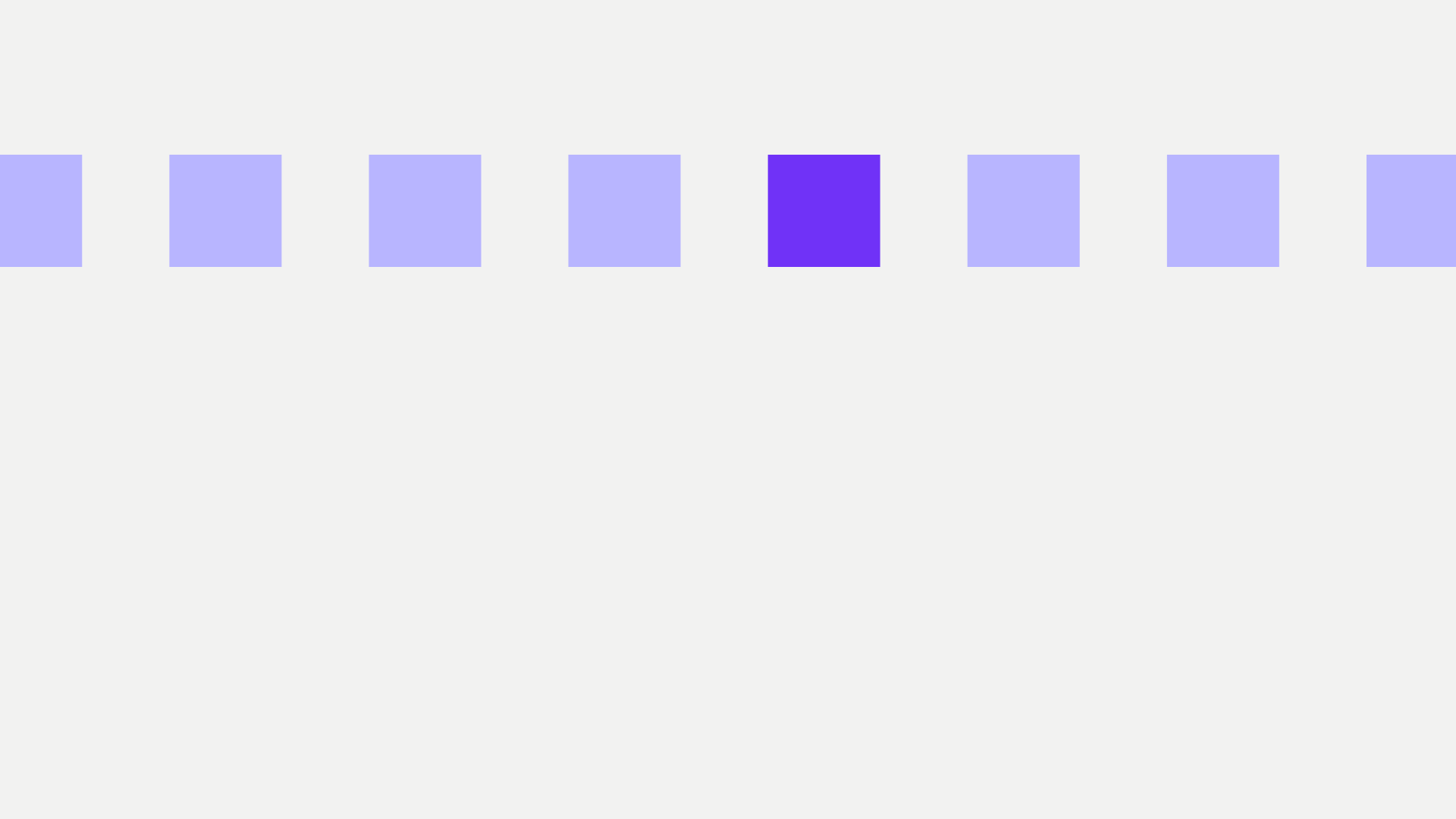

If your lab runs both qPCR and dPCR, you're not alone. From academic discovery teams to cell and gene therapy innovators, many rely on both techniques to balance speed, sensitivity, and quantification precision.
But constantly hopping between platforms has a price. And it's not just the time or dollars spent managing two systems – it's the friction that slows everything down.
Why teams switch back and forth between qPCR and dPCR
qPCR is a reliable workhorse for most labs — fast, well-established, and efficient. It’s great when you need throughput. But when you need sensitivity, accuracy for low-abundance targets, or absolute quantification? That’s when you move to dPCR.
So labs juggle both, sometimes even splitting samples to run them on both systems. It’s a patchwork solution to a fundamental problem: each platform does one thing well, but not everything.

The real cost of switching — broken workflows and lost confidence
Switching between qPCR and dPCR adds more than duplicated work. It introduces variability – every handoff between systems is a chance for error, delay, or data that doesn’t quite align. Validation takes longer and context gets lost. Suddenly, what should be a smooth discovery process turns into a maze of re-runs, re-calculations, and second-guessing when you try to align data from different systems.
Researchers spend precious time deciding which platform to trust for different experiments, instead of just moving forward. That slows down everything from basic insights to translational breakthroughs.

Ditch the switch with Countable PCR — and get everything in one platform
Countable PCR is a platform that was built to give you the quantitative confidence of dPCR with the ease and speed of qPCR.
You don’t have to choose between efficiency and precision anymore – Countable PCR offers both. You’ll get high sensitivity, absolute quantification, and straightforward workflows. No more system switching.

Picture your workflow with only one platform using Countable PCR
- One instrument, without performance tradeoffs
- Design assays quickly like qPCR, but get better data quality than either qPCR or dPCR provides
- Less time spent re-running experiments, more time exploring new hypotheses
For R&D and discovery teams, that means acceleration. Run more complex assays with fewer doubts about the results. Get to the answers faster and with less fuss, so that you start asking new questions.



.png)

